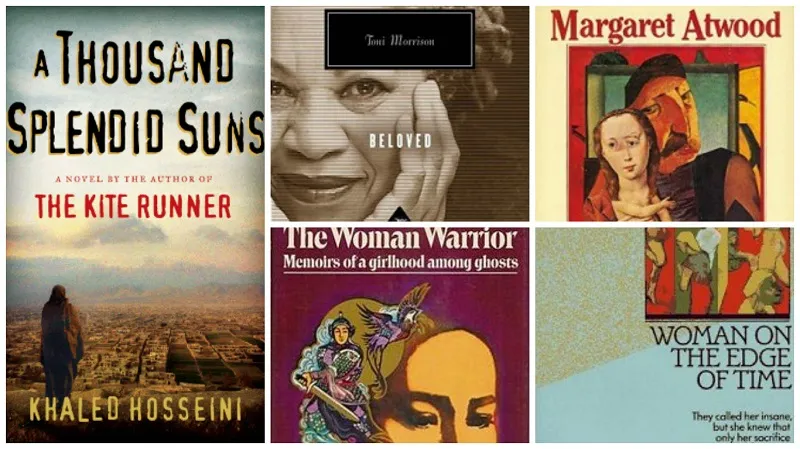Five books where voiceless women speak
Literature has always been the platform for the voices of the underdog to be heard. We, humans, tend to be caught up in our lives and often it is when an artist or writer creatively spins a story around the neglected and the oppressed, that we take note. The five books reviewed below are by writers from different places and backgrounds, with a common thread of powerful female characters who face adversity, but refuse to remain silent.
Toni Morrison’s Beloved
Published in 1987, Toni Morrison’s Beloved delves into the complex racial issues of the post-civil war southern American society where African Americans faced persecution for ages; and physical and sexual abuse of black women was commonplace. Slavery might be a thing of the past but the psychological damage persists long after, as evidenced from the line in the book – “Freeing yourself was one thing, claiming ownership of that freed self was another.” With supernatural elements and a troubled protagonist with shades of grey or even black, this Pulitzer winning book woke an entire generation up to the trauma of slavery and systemic abuse.
Maxine Hong Kingston’s Woman Warrior
Published in 1976, Maxine Hong Kingston’s Woman Warrior: Memoirs of a girlhood among ghosts is, in brief, the story of the eternal struggle immigrants face in dealing with the life they left behind and the new life in their adopted country. Maxine’s account of her childhood raises the question of identity among first-generation immigrants.
“In America my mother has eyes as strong as boulders, never once skittering off a face, but she has not learned to place decorations and phonograph needles, nor has she stopped seeing land on the other side of the oceans. Now her eyes include the relatives in China, as they once included my father smiling and smiling in his many western outfits, a different one for each photograph that he sent from America.”
Published in the pre-internet era when the China meant noodles and Bruce Lee in the eyes of the world, the book is filled with anecdotes from the author’s family history as well as Cantonese legend and folklore. Woman warrior combines the push and pull that an immigrant feels with the turmoil of a woman who had to uproot her family from one continent and set up roots in a new one.

Margaret Atwood’s The Handmaid’s tale
Margaret Atwood’s chilling dystopian novel The Handmaid’s tale was published in 1985, much before the Taliban showed the world the kind of oppression women would face in a society in the control of a fundamentalist group. Perhaps the scariest part of the story is that how easy it would be for a right wing government to enforce the ideas in the book in any Asian, European, or American country today. The Republic of Gilead, set up by a right wing Christian government in the near future, decrees women to be the property of either her husband or a commander. The protagonist of the book starts off as a regular working woman, married with a child and it’s all snatched beneath her feet overnight.
“The moment of betrayal is the worst, the moment when you know beyond any doubt that you’ve been betrayed: that some other human being has wished you that much evil.”
The handmaid’s tale drives home the fact that the freedom that we know and the fundamental rights we enjoy cannot be taken for granted. The women in the novel lose even their names, becoming mere possessions under the eyes of the law.
“I want to be held and told my name. I want to be valued, in ways that I am not; I want to be more than valuable. I repeat my former name; remind myself of what I once could do, how others saw me.”
Khaled Hosseini’s A Thousand Splendid Suns
Published in 2007, Khaled Hosseini’s A Thousand Splendid Suns is remarkable for being a book with two central female characters written by a male author. But Mariam and Laila’s stories do not really do justice to the complete disintegration of the lives of women in Afghanistan during the Taliban era, when a good number of educated women had to resort to begging and several others were in house arrest like situations, since they had no male relatives to accompany them outside.
Mariam’s mother’s prophetic words are applicable to a good chunk of women around the world. “Learn this now and learn it well. Like a compass facing north, a man’s accusing finger always finds a woman. Always. You remember that, Mariam.”
Marge Piercy’s Woman on the edge of time
Woman on the edge of time, published in 1976, has themes of mental illness, abuse, and loneliness offset by a surrealistic, semi-utopian future. The central character is a poor Hispanic woman, who has been forcibly admitted to a mental institution after losing custody of her daughter. While heavily drugged in the hospital in New York, she begins to communicate with an androgynous young woman named Luciente, which is seen as delusions by her doctors. Luciente is from the future, the agrarian society of Mattapoisett. There is no pollution, poverty and there is complete gender equality to the extent that pregnancies have been made redundant and there are technological replacements for giving birth. There is something off about this future though, and the book leads one to question what progress is, and what is right and wrong. Ambiguous as the book might be on lot of aspects, it does weave a story around a purportedly mentally unstable, lonely woman.
.







